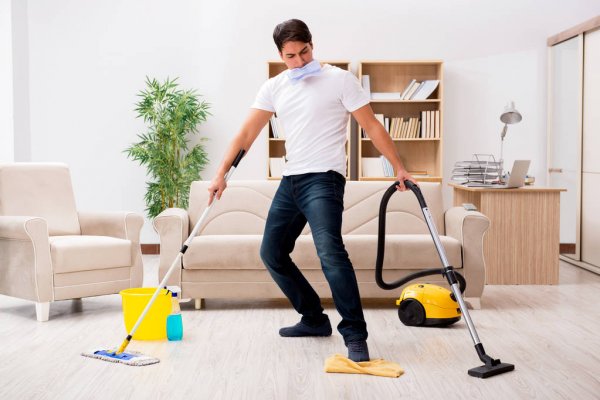No doubt, vinyl plank flooring is not less than a luxury that comes in your price range. Due to its resistance, durability, and hardwood looks, it has been a top choice for most people. Another good reason to prefer vinyl is that it is easy to maintain and install. But, in the process of installing it, we may ignore some points that result in buckling.
In general, vinyl flooring requires a click method, glue down, or floating to install. Well, these are the easiest ways to install them. But, after some time, you may experience some buckling. That is nothing to worry about, as it is repairable. In this case, you need to get to the root cause to avoid it from occurring again.
Let’s understand the problem then head to the solutions.
What causes buckling?
Typically, buckling can happen in any vinyl installation. There are few reasons behind its happening. So, start by knowing the root causes, then try to avoid them. Mainly, buckling is caused by:
- Excessive heat
- Moisture on the subfloor
- No space for expansion
- Dragging heavy items over the floor
Excessive heat:
Heat and sunlight are one of the main reasons behind vinyl buckling. In some cases, it expands, and otherwise, it contracts. As you know, that direct sunlight not only discolors but also damages its surface. So, whether you glue down or stick-click the vinyl plank flooring, leaving a slight gap is perfect. But, with extreme weather conditions, like cold or hot, you can expect the floor to buckle up.
Moisture on the subfloor:
Although vinyl plank flooring is completely waterproof, if water seeps into the gaps, it causes them to expand. Also, it occurs if the subfloor has moisture content. In this case, your vinyl planks are most likely to buckle up from any gap. Using high-quality material stops this from happening. That is why I do not recommend vinyl planks in a wet area like shower surrounds.
No space for expansion:
Well, you should know that vinyl planks do expand or contract. But that does not do any severe harm or damage. That is why it is vital to leave a slight gap between the planks. Otherwise, the planks will have a limited space to react to the cold or heat. In general, it happens in summers due to extreme heat.
Dragging heavy items over the floor:
Glue down, loose lay, and peel-stick method are common ways of vinyl installation. All of them are long-lasting and reliable. But loose-lay vinyl flooring in lewis Center is more likely to buckle up by dragging heavy objects on the floor. When shifting heavy items, you may cause some external damage.
Some ways to protect vinyl planks from buckling:
Now that you know what causes vinyl floors to buckle, you can avoid it from happening. So, do the measures the below:
- Use proper adhesives: In the glue-down method, use top-quality adhesives. Cheap or low-quality glue may lose earlier than other methods. In this case, make sure to use a premium quality product and professional help. If you DIY, follow the instructions carefully.
- Roll the vinyl plank flooring: It does not matter what method you use to install vinyl planks. After laying the floor, roll the floor with a 100-pound roller to avoid any consequences later. In this way, you can ensure the subfloor and the glue. As a result, it will help you avoid buckling.
Read Also: Top ideas about commercial kitchen countertops
- Protect from direct heat: First of all, do not use vinyl floor planks outdoors, where there is extreme heat. Also, if your corridors have direct sunlight, use windows or shutters. Moreover, you can use curtains to prevent the direct source of heat.
- Repair the planks: loose lay and click planks are easy to repair and replace. So, gently remove the buckled area and remove the adhesives. In this case, always keep some spare planks and use them in such situations. Then, apply the glue and carefully place the cut plank. In addition, apply some weight and let it dry.
Conclusion:
There are few possibilities that your vinyl plank flooring might buckle. In this case, you should read the causes that are listed above. But, you can resolve this issue by taking some measures. So, start by keeping the glue intact. Then, avoid direct heat exposure. And make sure that the floor planks are glued and clicked well. And go to Columbus flooring city to get quality planks at low prices. Or repair when the need arises.








